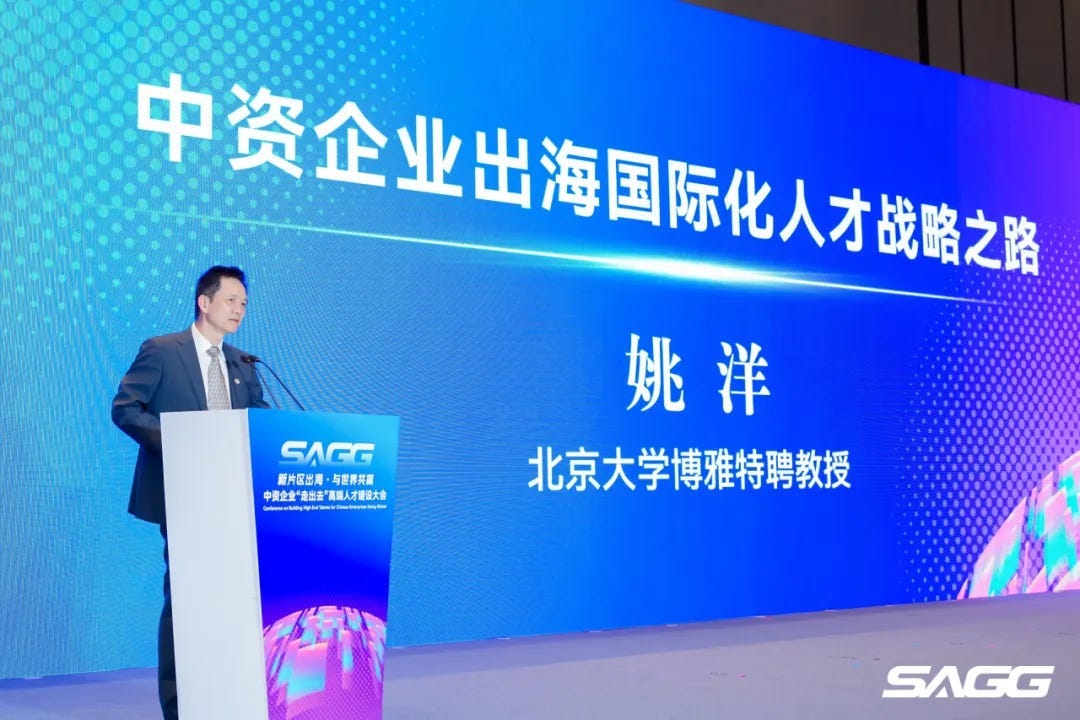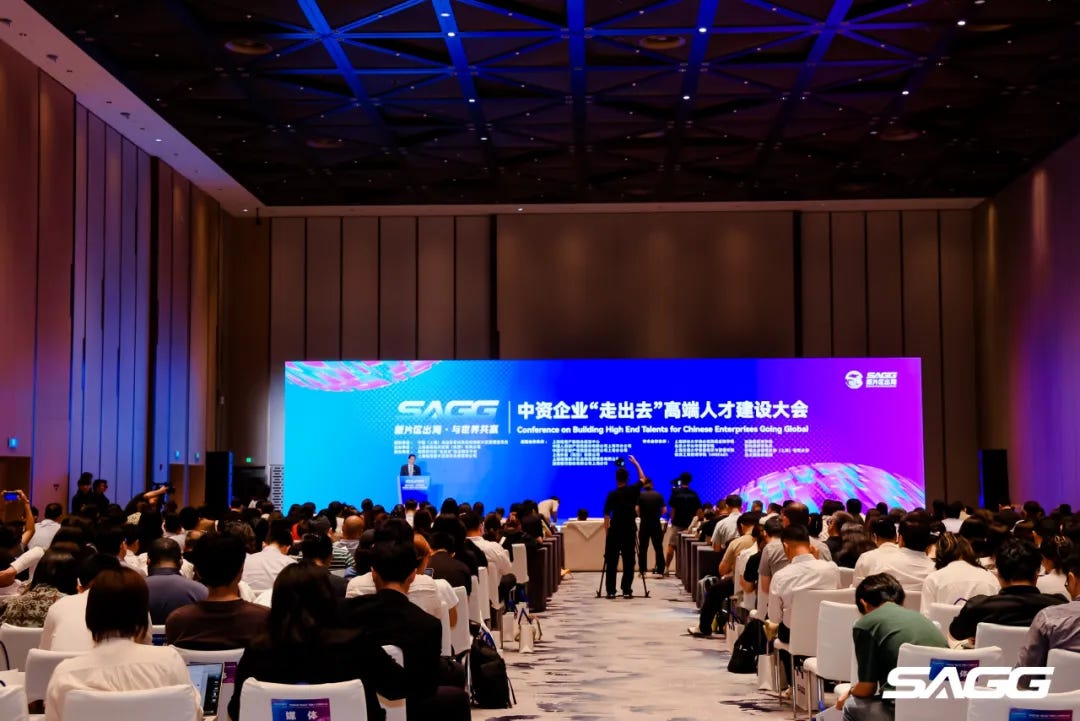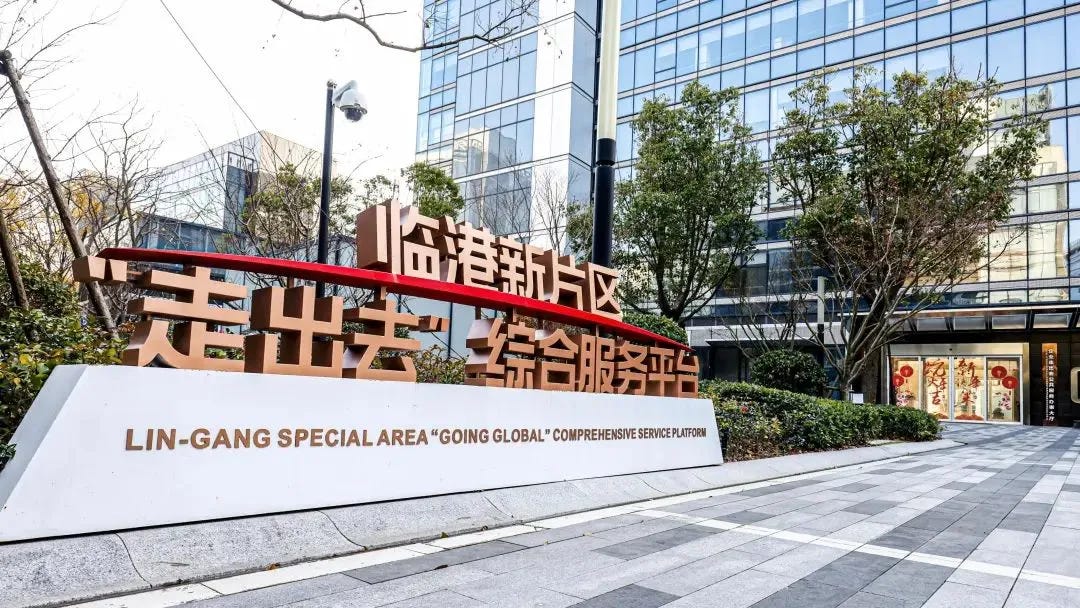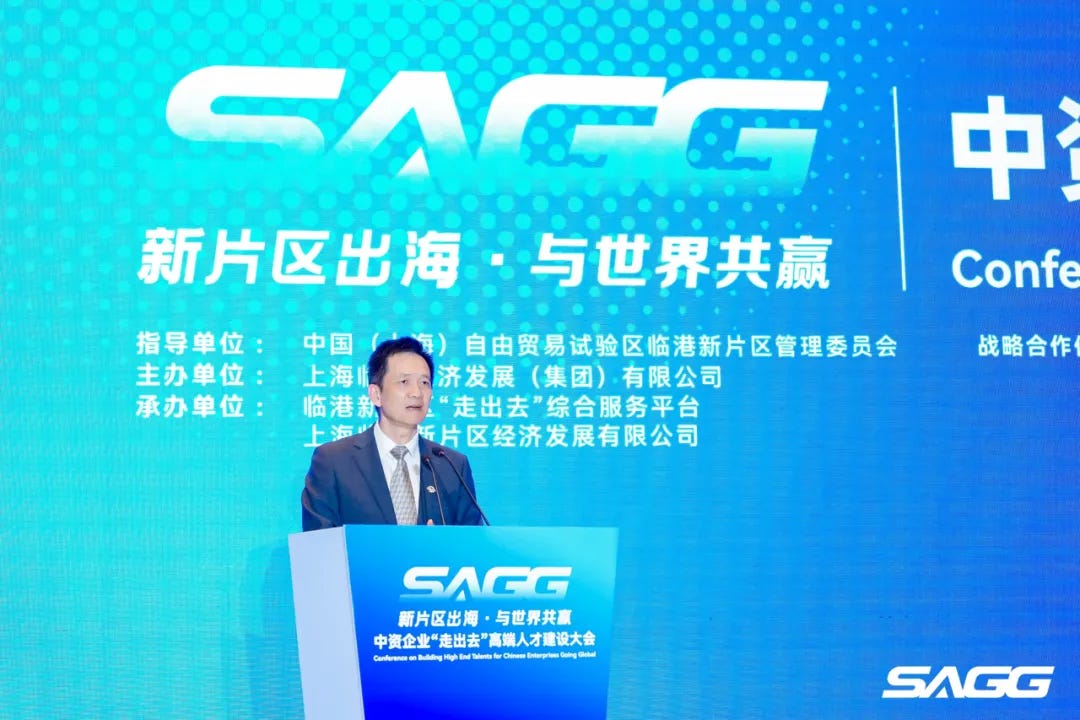Yao Yang calls for homegrown confidence and openness as Chinese companies go global
Leading economist who recently joined Shanghai University of Finance and Economics urges China to see JV/tech transfer demands as opportunities rather than threats
Yao Yang has been a professor and dean of Dishui Lake Advanced Finance Institute at Shanghai University of Finance and Economics (SUFE) since May 2025.
Established in March 2023, the Dishui Lake Institute is a collaboration between the Lin-gang Special Area Administration, SUFE, and Shanghai Lin-gang Economic Development (Group) Co., Ltd. (Lingang Group), with a focus on becoming a world-class international business school.
Yao previously spent 28 years at Peking University, serving as the director of the university’s China Centre for Economic Research (CCER), Dean of National School of Development National School of Development (NSD, the successor to the CCER), and executive director of the Institute of South-South Cooperation and Development.
Yao made the following remarks at the Conference on Building High-End Talents for Chinese Enterprises Going Global, held by the Lin-gang Special Area of the China (Shanghai) Pilot Free Trade Zone on June 26, 2025.
Importantly, Yao called on China to facilitate, rather than “securitize” outward technology transfer.
The Chinese transcript was published on July 31 in the official WeChat blog of the Dishui Lake Advanced Finance Institute.
姚洋教授“走出去”大会主旨发言:中国企业出海趋势与全球经贸关系的未来展望
Yao Yang’s Keynote Speech at the “Going Global” Conference: The Trend of Chinese Enterprises Going Abroad and the Future Outlook of Global Economic and Trade Relations.
I’m honoured to join this conference. Today’s theme is “Building High-End Talents For Chinese Enterprises Going Global.” Here, I’d like to discuss the current international economic landscape that China is in, examining its shifts from a macro perspective.
First, Chinese enterprises’ going global aligns with historical trends. Over the past two centuries, all successful nations have seen their companies go global. The driving force, I believe, lies in technological and capital advantages. Take 19th-century Britain as an example: with cutting-edge technology and accumulated capital from sustained trade surpluses, its enterprises naturally expanded overseas.
The 20th century belonged to the U.S. and Japan, as the global expansion of businesses from these nations accumulated substantial overseas assets. Today, the UK’s overseas assets exceed five times its GDP, Japan’s surpasses twice its GDP, and even the U.S., despite its massive GDP, holds overseas assets about 1.5 times its GDP.
In contrast, China’s global expansion is still in its early stages, with overseas assets representing only about half of its GDP. Compared to developed economies, there is still a long way to go. However, I predict that in the next two to three decades, Chinese companies will follow the path of their U.S. and UK counterparts, effectively establishing another “China” abroad.
China has now reached new heights in technology, production capacity, and capital. Overall, Chinese companies’ technological capabilities rank in the world’s second tier, just behind the leading U.S. tier. During my recent visits to Europe, I observed that Europe has, in a way, become a museum of world civilisation. Riding their subways feels like stepping into a previous technological era—yet Europeans are content with this, which is ultimately a matter of choice.
China, however, is still in a phase of rapid growth, with technology advancing swiftly. Financially, China has maintained a high savings rate for decades, and its substantial trade surplus—nearly $1 trillion last year—provides a solid capital foundation. To put that into perspective, $1 trillion alone would rank among the world’s top 20 largest economies. Absorbing such vast capital domestically has proven challenging.
China has already amassed substantial production capacity. Under these circumstances, it has become a historical inevitability for our enterprises to go global and recreate a “China” overseas.
Some argue that the current international economic climate is unfavourable to China, but I believe it is an overestimation of the severity of the global situation. In reality, the world cannot do without China—it needs China.
Let’s examine this region by region. For many developing countries, China serves as a model for their development.
Southeast Asia holds a highly favourable view of China, largely because Chinese businesses have created jobs, boosted exports, and driven prosperity in the region. I previously led the Institute of South-South Cooperation and Development at Peking University, where all students came from Belt and Road countries. You can see their strong admiration for China’s development model and achievements; they are eager to bring China’s experience back to their home countries. Of course, I reminded them that studying here doesn’t mean copying China’s experience exactly, as each country has its unique conditions. Instead, they should treat China as a mirror and reflect on ways for their own progress. Nevertheless, developing countries have a deep admiration for China. Over the past decade, China’s substantial investments in Southeast Asia have led to the region having the most favourable view of China in the world. A key reason is that Chinese companies’ presence has brought jobs, exports, and prosperity to local communities.
Many perceive Europe as opposing China, citing examples such as the EU’s anti-subsidy tariffs on Chinese electric vehicles (EVs). In reality, this stems from Europe’s fear of China’s rapid progress in the EV sector. Technologically, Chinese EVs are one or two generations ahead of Europe’s, yet their costs remain significantly lower.
During the Munich Security Conference in February, I had discussions with German counterparts. Publicly, they advocated for blocking Chinese products and imposing higher tariffs. However, privately, they admitted that China’s product quality has improved while costs remain significantly lower than those in Europe. They believed that fully opening their market would make it difficult for European firms to compete with Chinese companies.
It is essential to first change the mindset. Too often, people remain stuck in a mindset from decades ago or even further back, dwelling on historical humiliations. However, this should not hinder progress. Today, it can be said that “the tables have been turned around.”
If China is to continue viewing Europe as a significant market worth investing in, it must adopt a more open mindset and move beyond seeing technology transfer as a matter of national security. China benefited from this in the past, and now it’s time to give back to the world.
The so-called “going global” for enterprises, if it’s merely about exporting China’s production capacity to other countries, won’t take Chinese businesses far. Chinese enterprises need to integrate into local societies and allow technology to take root there, so that people will welcome them. For example, Europe is nervous about China’s development, fearing over-dependence on China. Therefore, it is crucial to consider how Chinese enterprises can address these concerns when expanding overseas.
In fact, Chinese companies have considerable investment prospects in Europe. Take Roewe cars, made in Shanghai, as an example. They’re very popular in Europe, especially in the UK. I have just returned from London this morning, and you can see many Roewe cars, under SAIC Motor Corporation Limited, on British streets. And everyone knows that the black taxis, the most common cars in London, are owned by Geely. The question is: How can Chinese companies, especially in the case of these cars, get the British and Europeans, more broadly, to accept them? This requires careful consideration. I sincerely hope SAIC could relocate the Roewe production lines to the UK, as currently, all the cars are made in Shanghai and then exported to Britain.
Regarding the U.S., although China-U.S. economic tensions are unlikely to return to the way they were, is there no room for improvement? I don’t believe that’s the case. During the tariff war, China’s reciprocal countermeasures were essentially trade frictions, which should be viewed with a level-headed approach. China’s countermeasures weren’t about confrontation for its own sake but aimed at bringing the U.S. back to the negotiating table. In fact, China’s strategy ultimately proved successful. The first Geneva talks yielded better-than-expected results, and the London negotiations further stabilised China-U.S. economic relations.
By now, the US should realise that China is no longer the country it once was. In a trade war, China is no longer limited to passive response or endurance—it now has its own trump cards. In fact, it was China’s strength that forced the U.S. back to the negotiating table. Over the next 90 days, it is expected that China and the U.S. will reach a substantial agreement, likely covering tariffs, market access, investment, and possibly even exchange rates.
A stronger yuan against the dollar would help shift production patterns and boost domestic consumption. Theoretically, the yuan has 50% appreciation potential, and in practice, a 15-20% increase is achievable.
Some may worry about China’s exports, but there should be confidence. Exporters have bargaining power: if the yuan appreciates, they can pass some of the cost increases onto prices, asking U.S. importers to make concessions, thereby absorbing the exchange rate impact over time.
A stronger yuan benefits both China’s shift in production models and the growth of domestic consumption. If a major China-U.S. deal is reached, trade tensions will gradually ease, and Chinese investment in the U.S. may even surge.
During his campaign, Trump welcomed Chinese companies investing in the United States, with the condition that they bring technology and capital. Now, much like Europe, the U.S. has begun discussing the idea of learning from China by requiring Chinese companies to establish joint ventures and transfer technology. In my view, this is a form of recognition of China’s strength. Although both the U.S. and Europe still harbour a deep reluctance to admit that China has surpassed them in many areas, this so-called joint venture technology and transfer approach is, in fact, a subtle acknowledgement of it. The best response from China, in my opinion, is to accept it graciously.
In fact, over the past decade, China has made significant contributions to the reindustrialisation of the United States. China-U.S. economic and trade relations will ultimately return to economic principles, finding a balance point for positive-sum outcomes. My assessment of the international situation is that economic and trade relations will stabilise.
Finally, returning to today’s theme of talent development, the Lin-gang Special Area of China (Shanghai) Pilot Free Trade Zone has established the Overseas Talent Alliance. I believe talent development can take two forms. The first is degree-based education, and the Dishui Lake Advanced Finance Institute currently offers such degree programs, providing students with systematic learning opportunities and a structured framework to understand the laws of economics and development. It is easier to go global from Lin-gang, as it is a frontier of China’s institutional openness. The second approach is the aforementioned alliance, which is similar to executive development programs. These programs are more flexible, and through the alliance established in Lin-gang, co-creation and improvement can take place. This is also the original intention, I believe, behind Lin-gang Special Area hosting today’s forum.










It seems to me that the UK's very high ratio of foreign assets to GDP is a legacy of colonialism which is both a strength and a weakness for the British state. A strength because that overseas capital generates a return and it can be repatriated if political circumstances allow, and a weakness because it provides a false sense of security, and encourages complacency in the domestic sphere. If you strip away the foreign assets and income, the UK is living beyond its means, and foreign assets and income can only be fully protected through global hegemony, which can no longer be taken for granted. Would China wish to end up in a similar position?
Having said that, there is space for China to constructively engage in the Asia-Pacific region at least. As the colonialist regime in New Zealand doubles down on its allegiance to the Anglosphere (US, UK, Australia, Canada), the country has steadily de-industrialized, while the population continues to grow. That leaves New Zealand increasingly dependent on primary industry exports, and vulnerable to trade shocks. When the political direction reverses, as it inevitably will, Aotearoa may be looking to China, among others, to collaborate in the restoration of domestic production as it asserts and develops national independence.
Open source is the way to go. Well said. Generosity all round.